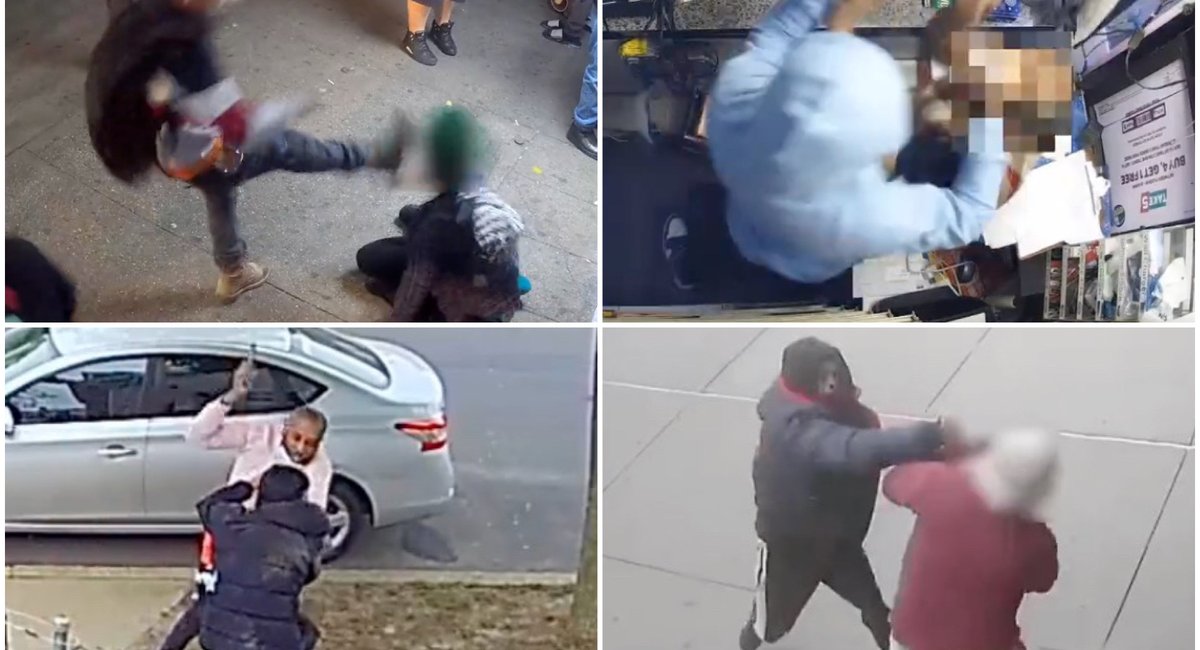Mayor Eric Adams has one of the biggest bully pulpits in the country and for months he’s used it to drive home this message: Get rid of violent imagery on social media.
“Look at what we are showing now on social media,” the mayor said during a May interview on Pix 11. “We should be using artificial intelligence to identify words, identify phrases, to immediately remove and censor some of this information.”
He later added, “The type of violence that’s being promoted on social media is beyond anything I’ve ever witnessed before.”
The mayor was responding to the online history of two recent mass shooting suspects. The man accused of the April subway shooting in Sunset Park had posted videos of violent ramblings on social media, and the suspect in the Buffalo grocery store shooting was live-streaming as the horror unfolded. The postings hurled Big Tech into the spotlight and inspired city and state leaders, including Gov. Kathy Hochul, to demand more from internet companies when it comes to policing the violence on their platforms.
The attack on social media has been a recurring theme in the mayor’s rhetoric, but his May remarks came just days after his own police department posted surveillance footage of violent perpetrators pointing guns at their victims.
The New York City Police Department has long used social media to share information on crimes under investigation and to get the public’s help finding suspects. Surveillance footage and imagery have become commonplace on the department’s Twitter and Facebook pages. But as technology progressed, so did the frequency of graphic imagery on the department’s online channels, creating a cycle of sometimes shockingly graphic imagery being shared online, picked up by local news outlets, and transmitted across the airwaves.
So while the mayor has been inveighing against the varied images of violence by civilians, there’s been no shortage of it streaming from the NYPD’s social media channels. The mayor’s office declined to comment, but the NYPD told Gothamist there was value in showing video of certain crimes in progress because it might motivate the public to help catch criminals.
The footage is often raw and unedited, except for the obscuring of victims’ faces. The posts often get picked up and shared by local media outlets and distributed on other social media platforms.
A tweet from June 7th showed a suspect tossing a 52-year-old woman onto subway tracks in the Bronx. A post on May 25th showed a 37-year-old woman getting violently kicked in the head and falling onto her back. On May 16th, the department posted footage on Twitter of a suspect in Queens beating a 24-year-old man over the head with a firearm. Another post from May 11th showed a suspect in Staten Island hitting a 54-year-old store employee on the head with a glass bottle and choking him. A tweet from May 4th showed a man in the Bronx punching a 77-year-old man in the face, knocking him over.
In an interview with Gothamist, NYPD Deputy Commissioner of Public Information John Miller said the department posts imagery like this to “engage the public.”
“Sometimes, one way to engage is to show either the incident or the brutality of the incident or the wanton nature of the incident, where you can tell these people are firing guns on a crowded street,” Miller said. “And there are children in the background. There are mothers in the background. There are elderly people in the background. There’s a park behind them and they just don’t care where those bullets go. And sometimes, that in and of itself will add power to the imagery that goes with it.”
Miller added that New York City is still one of the safest big cities in the country by most measures, with the number of shootings down from one year ago, but still up from pre-pandemic levels.
But sociologist Barry Glassner, who wrote “Culture of Fear: Why Americans Are Afraid of the Wrong Things,” told Gothamist that the proliferation of images and videos of crimes in progress could make people feel more afraid than the crime statistics warrant — without necessarily helping catch the perpetrators of crimes.
“Any added value for actually succeeding at the police work, I would be pretty confident is not as great as the damage done by all these violent videos circulating around and creating more fear in the population and more sense that there’s crime everywhere you turn,” Glassner said. “And that it’s very scary.”
Glassner said the more people are inundated with the prevalence of crime — the more they see violent imagery online, such as the footage the NYPD shares — the more anxious the general public becomes, regardless of statistics.
He also said the recordings of crimes in progress present an incomplete picture.
“The recording of the event by the police presents one perspective,” he said. “ [It] doesn’t capture the full context of what occurred. And so people watch this and it seems strictly factual and complete, and it can’t be — it’s not possible.”
When determining what to share, and how to share it, Miller said officers comb through security footage and try to find identifiable images of the particular suspect. In many cases, he said, the department will share video footage so the public can see how a suspect might walk or move. If a victim is involved, he said, officers notify them about disseminating footage with their faces blurred.
“The deal with videos and imagery of violence that we put out has to do with a different set of obligations,” he said. “And we shouldn’t be considering whether it increases fear or not. Our first obligation is to the victim of that crime. The victim of that crime, above all considerations of perception and public relations and spin, the victim of that crime deserves justice.”
